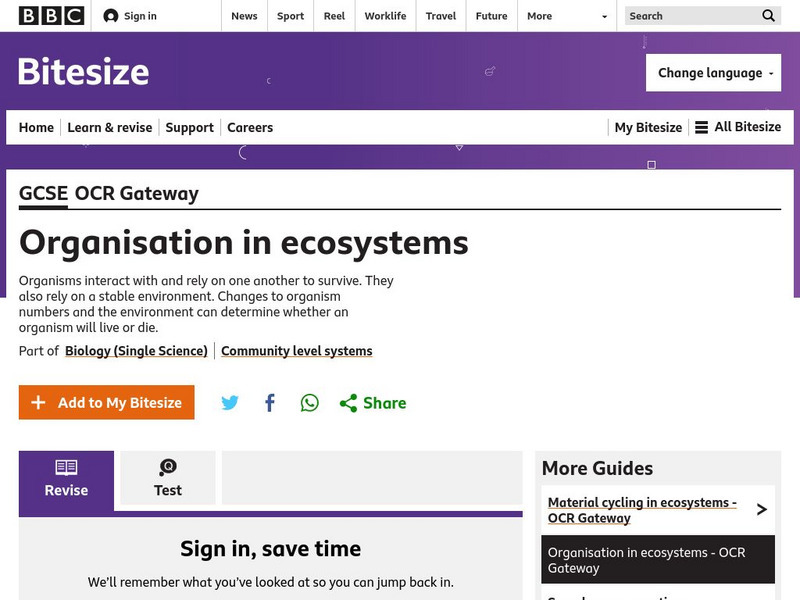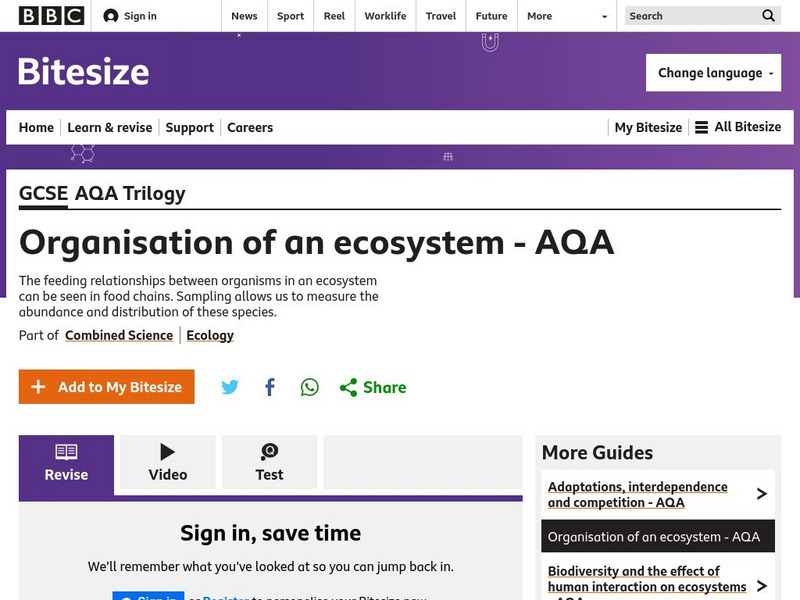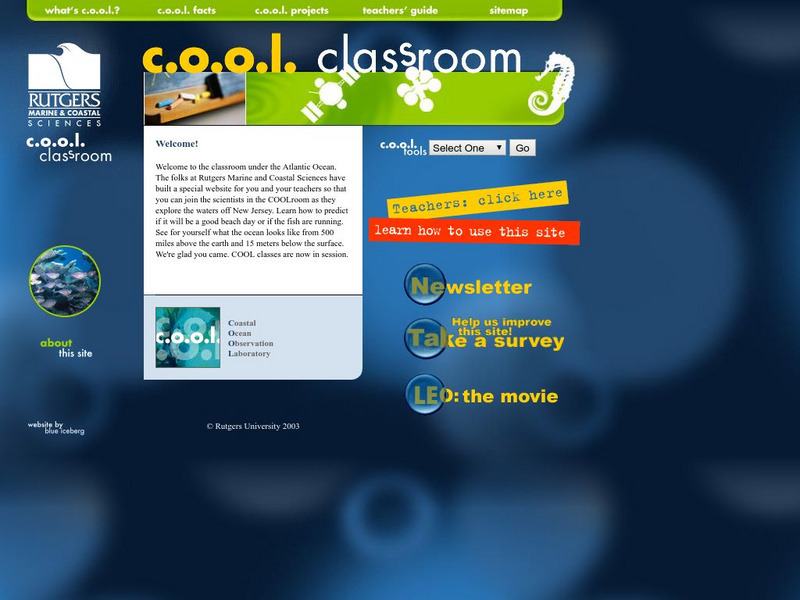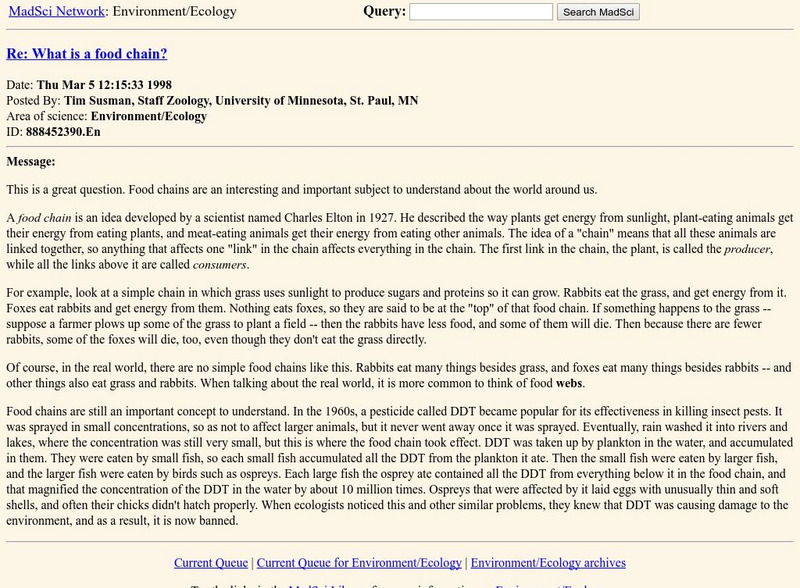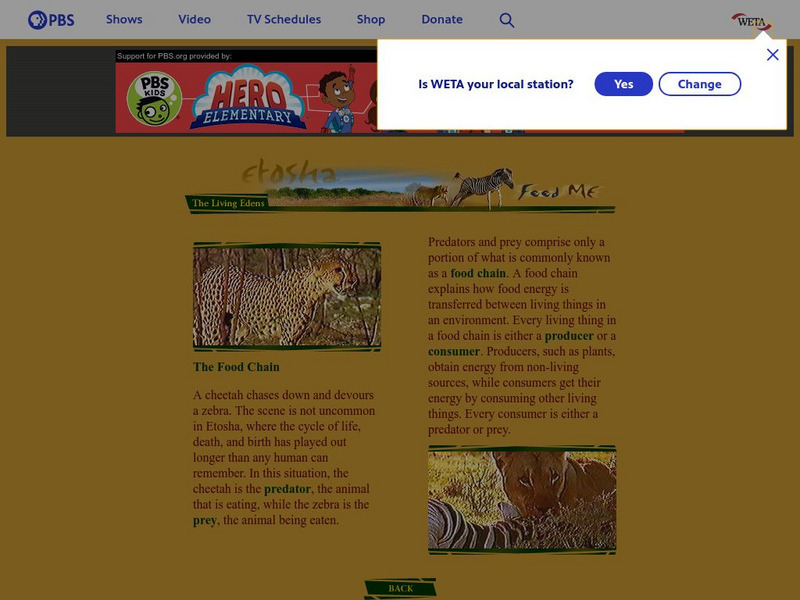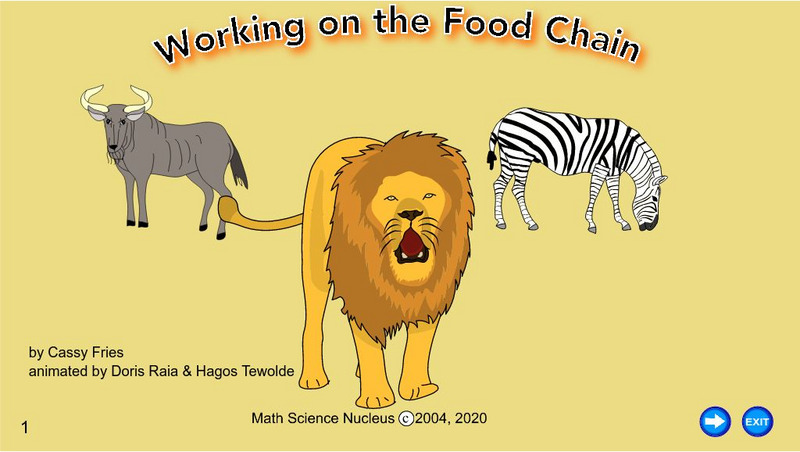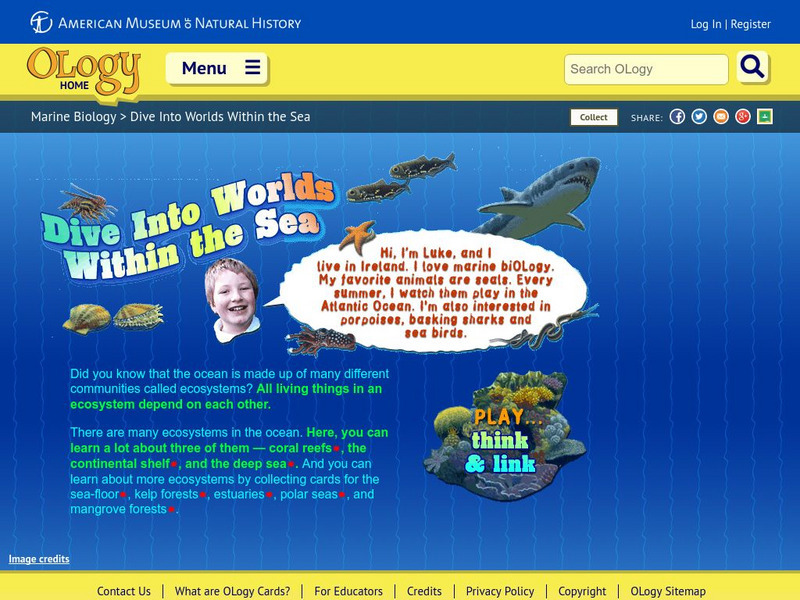Hi, what do you want to do?
Sophia Learning
Sophia: The Role of Plants in the Food Chain: Lesson 3
This lesson explains the role plants play in the conversion of inorganic materials into organic material to support living things. It is 3 of 3 in the series titled "The Role of Plants in the Food Chain."
Science Struck
Science Struck: Food Chain in the Tundra Region
Describes the characteristics of a tundra biome, how a tundra food chain compares to a tropical food chain, and what the different trophic levels look like.
Science Struck
Science Struck: Examples of Primary Consumers in the Food Chain
Explains what a primary consumer's role in a food chain is and provides examples.
TeachEngineering
Teach Engineering: Biodomes
Students explore the biosphere's environments and ecosystems, learning along the way about the plants, animals, resources and natural cycles of our planet. Over the course of lessons 2-6, students use their growing understanding of...
BBC
Bbc: Gcse Bitesize: Organization in Ecosystems
This lesson focuses on food chains in ecosystems, including levels of consumers, decomposers, and a list of common words used with food chains and their definitions. It also provides a link to an assessment.
BBC
Bbc: Gcse Bitesize: Organization of an Ecosystem Aqa
This lesson focuses on the organization of an ecosystem. The feeding relationships between organisms in an ecosystem can be seen in food chains. Sampling allows us to measure the abundance and distribution of these species. It provides...
American Museum of Natural History
American Museum of Natural History: O Logy: Stuff to Do: Web of Life Game
Fun, interactive game that helps students identify interrelationships in an ecosystem. For six or more players.
Other
Rutgers Marine & Coastal Sciences: Cool Classroom
Students and teachers can explore the work of marine scientists and observe the ocean from their computers. Learn about Rutgers Coastal Ocean Observation Laboratory, discover why oceanography is important, and see what life is like in...
CK-12 Foundation
Ck 12: Biology: Mammal Structure and Function
[Free Registration/Login may be required to access all resource tools.] Describes the function of various structures in mammals.
Science and Mathematics Initiative for Learning Enhancement (SMILE)
Smile: The Effects of Pesticides on the Food Chain
Lesson plan to construct and explain a food chain. Includes games and activities to teach and reinforce concepts.
MadSci Network
What Is a Food Chain?
Discussion of what makes up a food chain and its significance. Includes some historical perspectives on developing the concept, and on how a pesticide called DDT affected food chains during the 1960's.
Other
Food Chains and Webs
A very informative site that discusses food chains and webs in detail. Not too complicated and fairly easy to understand, it also includes some pictures.
PBS
Pbs: The Living Edens: The Food Chain
PBS site provides some basic information on the food chain.
Math Science Nucleus
Math/science Nucleus: Food Chain Animation
This animation discusses the food chain in a storybook format. The chain is described as a cycle and both herbivores and carnivores are discussed.
Other
Segfl: Sebastian Swan: Pond Web
This interactive ebook "Pond Web" demonstrates a pond food chain. Students can click on the ? to find answers to questions posed in the text. Students are asked to retell the story using pictures provided at the end of the book.
ClassFlow
Class Flow: Food Chain
[Free Registration/Login Required] This flipchart reviews various food chains.
ClassFlow
Class Flow: Food Chains
[Free Registration/Login Required] This flipchart allows students to identify and manipulate food chains.
Other
Explore Learning: Food Chain Gizmo
In this ecosystem consisting of hawks, snakes, rabbits and grass, the population of each species can be studied as part of a food chain. Disease can be introduced for any species, and the number of animals can be increased or decreased...
ClassFlow
Class Flow: Animals: Food Chains, Characteristics, and Habitats Around the Worl
[Free Registration/Login Required] This flipchart is a great introduction to ways animals get food, characteristics of animals, habitats around the world. It contains pictures that will help students understand life cycles and where to...
ClassFlow
Class Flow: Food Chains
[Free Registration/Login Required] Through this flipchart students will be able to summarize and organize simple food chains.
Science Struck
Science Struck: Decomposers in the Ocean: Role and Examples
Describes five different types of decomposers that feed on decaying organic matter in the oceans and that are at the bottom of the ocean food chain.
PBS
Nh Pbs: Nature Works: Producers and Consumers
This concise site that provides an explanation of what producers are along with a short quiz to test your knowledge of producers and consumers.
American Museum of Natural History
American Museum of Natural History: Welcome to Dzanga Sangha
Connect the dots to investigate three different habitats either the forest, bai or river of the rain forest. By connecting the dots students make a food chain to see how organisms in each habitat depend on each other.
American Museum of Natural History
American Museum of Natural History: Dive Into Worlds Within the Sea
Think and Link to investigate three different ecosystem either the deep sea, coral reef or continental shelf. By connecting the dots students make a food chain to see how organisms in each habitat depend on each other.








